This is an interview I did with Lucy a long time ago – since then she’s written the books White Magic, Spellbound, The Lost Lands and Witches and Wizards (and co-written Witchy Magic, Faery Magic and Mermaid Magic with me), and created several oracle decks, including The Oracle of the Mermaids, The Oracle of Shadows and Light, The Faerytale Oracle and The Wild Wisdom of the Faery Oracle…
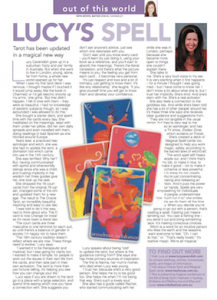 Lucy’s Spell
Lucy’s Spell
The ancient wisdom of tarot has been updated in a magical new way
Lucy Cavendish grew up in a suburban ‘footy and pie’ family in Australia. But when she went to live in London, young, alone, far from home, a whole new world opened up for her.
‘When I saw my first tarot deck I was nervous. I thought maybe if I touched it it would jump away, like the book in Charmed, because I wasn’t ready to touch them, or I’d get electric shocks up my arms,’ she grins.
‘But that didn’t happen, I just felt really excited when I touched them. I fell in love with them. I thought they were so beautiful. I had no knowledge of esoteric subjects, so it was really exciting for me. And I was so astounded that I was allowed to do this.’
She bought a starter deck, and spent time with the cards every day. She meditated on the meanings, slept with them under her pillow, did her own daily spreads and even travelled with them, doing readings in bad Spanish as she hitched around Europe.
Years later, a practiced reader, astrologer and witch, she was told she had to update the tarot, a divination tool which came into use in the 14th century in Italy.
She was terrified. Why her? But, having communicated with spirits and otherworldly beings since she was a small child, and trusting implicitly in the wisdom her three guides give her, she took up the daunting task.
She dropped the 16 court cards from the original 78 card set, changed some of the others, and updated them for a new age. The result is The Oracle Tarot, an incredibly beautiful, inspiring and easy-to-use deck.
‘I was told to do it this way, but I had to really think about why. The Death card is now Change, because that is what the meaning is about, it’s never been a literal death. And fhe court cards have three masculine cards and only one feminine card for each suit, so until there can be a balance of gender in society I’m happy not to have them there. I don’t feel the need to adhere to a 19th century tradition – it doesn’t reflect where we are now. These things need to evolve.
‘I wanted it to be therapeutic, I wanted it to be mystical, but I was going for clarity too, and making them accessible to everyone.
‘The old ones can be quite hard to read, and I wanted it to be easy. The notion of the occult is what’s hidden, and I wanted to lay it all out on the table. I wanted to make the reading very simple, and for people to work out the issues in their own life from the cards, and then take part in their own activation. It’s more than just fortune telling, it’s helping you see how you can change your life.’
Lucy says if you are drawn to the tarot you should go to a place with a large selection, and spend time touching them, looking at them, seeing which one you have a connection with. She suggests you don’t ask anyone’s advice, just see which one resonates with you.
‘Then it’s just about touching them and looking at them. Touching them is absolutely essential – they can take a lot of handling these cards. You can sleep with them – another good reason not to have court cards! – under your pillow to connect with them subconsciously. Do readings for yourself. Don’t wait until you know every single card, because you’ll learn through doing layouts, using your book as a reference, and you’ll start to absorb the meanings. Just practise, start to realise what they mean to you. Just look, really look at them. There’s the literal translation of the card, and there’s what the picture means to you, the feeling you get from each card… it becomes very personal.
‘It’s just respect and love and a lot of intimacy, just getting to know them. It’s like any relationship,’ she laughs. ‘If you give yourself time you will get to know them and develop your confidence.’
And although Lucy was intimidated when she first encountered the tarot, and was afraid she’d have to go through a long initiatory period before she could read them, she says everyone can use the tarot.
‘Working with the tarot is a beautiful way to connect with your psyche, your higher self and the universe.’
‘You don’t need special anything. We are all intuitive, we all have the capacity. In the past they have been mystified – which makes them beautiful and special and fantastic and exciting – but it also makes people feel that they’re not capable of using them. But everyone can. You just need to reach out and start connecting with them.’
And she said that a big part of it, especially when you’re reading for yourself, is your own interpretation. You will get to know your cards and they will speak their own language to you.
‘Conceptually they’re designed, and each card means x, y and z, but what that means to you in your life right now is totally different to what it would mean for me. The whole point of the card is to bring up your own stuff so you can reflect on it and put it into context in your life.
‘It’s lifting stuff out of your subconscious to bring it to your attention. You find out more about yourself through the tarot. You learn a fundamental meaning, but the way you read them adds your experience and perception. You’re a filter. And so is any reader you go to for a reading.’
Lucy speaks about being ‘told’ to update the tarot, but where is the guidance coming from? She has three primary sources of inspiration.
The first is Nanna, her mum’s mother, who died when Lucy was young. ‘I trust her, because she’s a very very good person. She’s here to help me try to be a good person too. She helps me when I’m not being that way. She’s such a lovely soul.’
She also has a guide called Rachel, who started communicating with her while she was in London, perhaps because she became more aware of her spiritual side and more open to things she couldn’t explain there.
‘She talks to me. She’s a very loud voice in my ear. It is very startling when it first happens – for a minute there I thought I was going mad – but I have come to know her. I don’t know a lot about what she is, but I trust her implicitly. She’s really kind. And she’s stern with me. She’s a real activator.’
She also feels a connection to the energy of the goddess Isis. And while she’s been told she has a lot of other ‘people’ around her, it is these three she says she receives clear guidance and suggestions from.
‘I connect more with these three. They are not tangible in the usual sense, but they are very real to me,’ she says.
Lucy is also an astrologer, and had a TV show, Zodiac Zone, which screened on Foxtel five times a day.
And she’s created a deck of Magical Spell cards, beautiful cards designed to help you work magic, safely, according to the sacred laws of witchcraft.
‘The word spell still freaks people out, and I think that’s my job, to make it nice, to make it good – not to make it saccharine or less powerful, but to let people know it’s not unsafe. You’re just concentrating, activating and releasing an intention. And it puts the power in your hands. Spells are very empowering for individuals.
‘They are a clever natural way to activate your own psychological disposition to go after what you activate in your own psyche. It’s about being empowered. And people underestimate how much fun it is too!’ she smiles.
‘I think we do them all the time anyway. When you decide you’re going to go out with a person, you’re casting a spell. Casting just means sending out. You cast a fishing line – you send it out and bring something back. It’s making conscious choices.
‘Witch is just another word for an intuitive person who likes the earth and the seasons. I want everyone to feel: “Oh, I can do that,” or: “That’s really lovely.” It’s positive magic. We’re all magical.’
To find out more, visit Lucy…
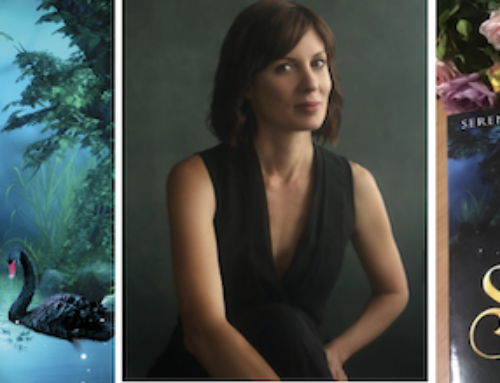
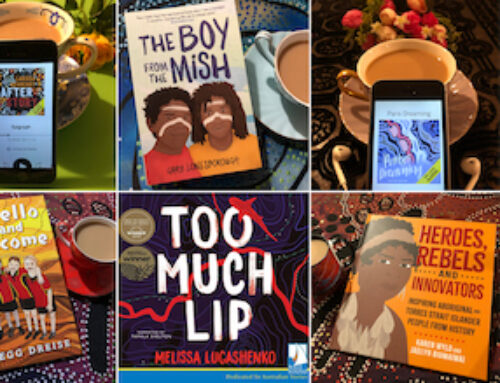
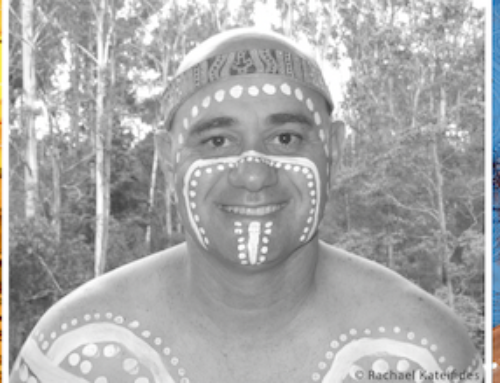
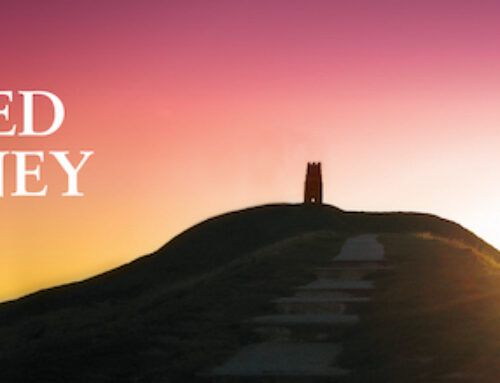
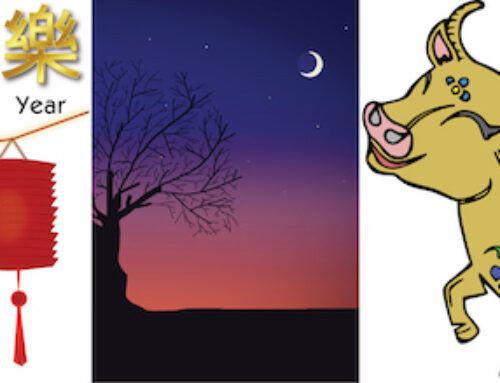


Get Social